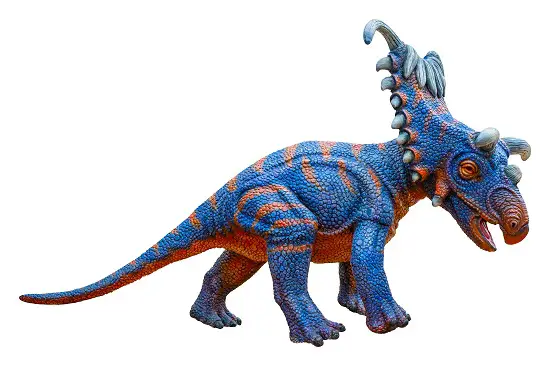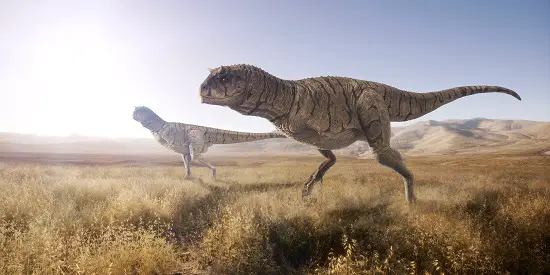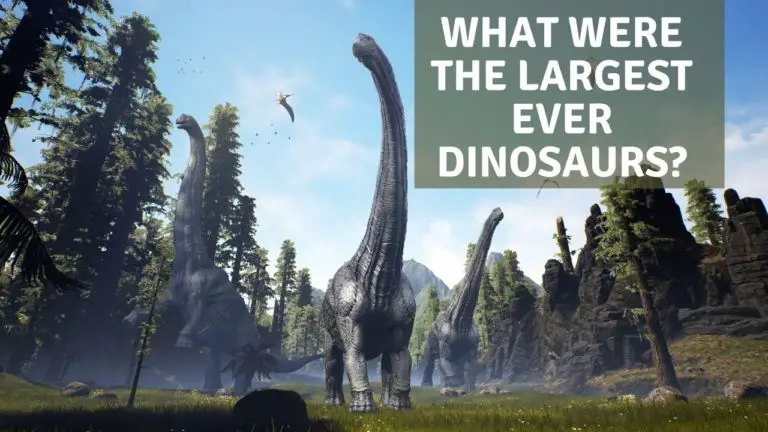Which Dinosaurs Had Spikes on their Heads?
Spikes appeared on dinosaurs just like they do on animals today. they may be in the shape of horns, bumps, antlers, crests or even what could only be described as spikes like on a security fence around a building. the intentions have not changed much either. They could be a warning to stay away, a demonstration of power and strength, or if it comes to it, a weapon to inflict damage on an attacker.
Many dinosaurs evolved spikes and horns on their heads, faces and necks. From the most famous like pachycephalosaurs, triceratops and ankylosaurus to the carnivores like Carnotaurus and Ceratosaurus. All would have used these for a combination of defense, deterrence, combat, and species recognition.
In the article below we will look at some of the dinosaurs, both herbivore and carnivore, that evolved spikes on their heads and the reasons why this may have been. Spikes were not a passing phase in dinosaurs, they were around from the Early Jurassic all the way to the end of the dinosaurs 66 million years ago.
Although head spikes were less common, (horns were pretty popular though) there were still plenty of dinosaurs that had them. We will explore those below.
Which Dinosaur Had Spikes on Its Head?
There were a few, quite a few when including the ceratopsian – horned dinosaurs, that had spikes on their heads from pachycephalosaurus and triceratops to kentrosaurus* ( well kind of) to Kosmoceratops and even a meat eater or two like ceratosaurus.
*Kentrosaurus did not have spikes on its head, but it had one on each shoulder that are so impressive we have to include it in this article, even if just for interest.
The table below highlights examples of dinosaurs that had spikes on their heads and some of the potential reasons they had them
| Dinosaur Name | Details on Spikes / horns | Reason for spikes / horns |
| Triceratops (early Cretaceous horned dinosaur) | Had spiky horns above its eyes that could be 3-4 feet long (1.2 metres) and a shorter nose horn. | Being large and possibly living in more open plains the horns would have been for deterrence and defense from large predators as well as to fight males of their own species. |
| Kentrosaurus (Jurassic Period Armoured Dinosaur) | Although no spiked horns on its head it had two shoulder spikes up to 73 cm (2+feet) long, as well as spiked tail and plated back. | These spikes, while making it very difficult to lie down, would have been used to protect from attacks from the site and to act as a deterrence. |
| Pachycephalosaurus (early Cretaceous Hard Headed Dinosaur) | While known for its 8 inch thick Domed bone head, this head was surrounded by spikes and bumps all around. | it is thought, much like horned animals today that this dinosaur would use its head to fight other males, display to females. Against predators it would not have had much defensive abilities. |
| Ceratosaurus. (Carnivore Late Jurassic) | 7-8 cm spike on its nose, | While not known with any certainly the spike on its head was likely used to push / fight males and as species recognition. |
| Carnotaurus (Carnivore Late Cretaceous) | two horns/spikes above its ears up to 6 inches long. ( maybe longer with skin and keratin) | Very likely to be used to combat other males as it had a strong neck and short head. very much like a bull! |
| Kosmoceratops (Herbivore Horned Late cretaceous ) | 15 (yes 15) Spikes and bumps on its head. Including two long spiky horns above its eyes to go with the others around its head frill. | it had a very ornamental frill, and the spikes around the edge were likely more for display. its eye horns were spike and could be used for fighting and defense. |
| Styracosaurus (Horned herbivore Late Cretaceous) | as well as 57 cm ( 2 ft) spiked horn on its nose it also had spikes up to 50 cm all around its head frill. | Likely used for defence and to combat other males. if its nose horn was spiked and not rounded it would have been a dangerous weapon. |
| Spiclypeus (Late Cretaceous horned Dinosaur.) | Name actually means Spiked shield. Its almost 1 feet long eye horns came out, up and to the side of its eyes, and it had 6 -8 smaller horns / spikes on each side of its frill. | Its spikes and horns were most likely used as defense, fighting with males (evidence of this) and deterrence , as well as to attract mates. |
| Ankylosaurus (Armored dinosaur Late Cretaceous) | Its whole head was armoured, spikes bumps, horns everywhere. However 4 were pronounced on its head over the eyes and out of the cheeks | Defense, it was basically a walking tank complete with a bone “bomb” at the end of its tail. |
Why did Dinosaurs have spikes on their head?
There would not be just one reason that dinosaurs, or indeed all animals would have evolved and found use for spikes and horns on their heads and elsewhere.
1. Dinosaur Head spikes were used for defense.
The most commonly thought reason is that they may have acted as a defense mechanism against predators, This is also the most popular reason that is portrayed in movies usually between a horned dinosaur and a Large theropod like T-Rex.
However other reasons for head spikes on dinosaurs have been suggested, and when looking at our own animals today appear to be comparable.
While spikes and horns could certainly, and most likely were, used for defense when needed, animals today with large horns, spikes or antlers use them to both demonstrate their own health and strength just by the size of them, and to fight with others, males, of their own species in competition for mates or status within groups.
2. Dinosaur spikes and horns were used to attract mates.
Deer, moose, antelopes all have antlers that grow large and spiked. these can be used to show how strong and well developed they are to females, and then be used, more literally and less visually, in battles to be the dominant male.
Also in the current animal kingdoms today it research has found that the larger herbivores Living today tend to have horns, and this was suggested as they were more visible to predators and lived in places with less cover. Then these horns could also be used to defend against predators as well as display to other males.
3. Dinosaur spikes could be used to identify members of the same species.
Although it maybe difficult to imagine a 30 feet long triceratops being mistaken for anything else, there are plenty of horned dinosaurs that look remarkably similar to it, some with shorter horns, some with longer frills, some with 15 spikes ( see later) so it is thought that horns, spikes, and potentially the colors they were played a role in species identification with dinosaurs.
Although triceratops is perhaps not the best example as its likely that ceratopsians, at least the herbivorous ones, used their frills to identify themselves to each other as their frills appear to be much more distinctive. there is one who shares the name, or some of the name of the Ceratopsian dinosaurs ( horned dinosaurs) that doesn’t have a frill and only had a small spike or horn on its head.
The ceratosaurus is one of the rare horned dinosaurs that was also a carnivore. it had a 7 cm long horn / spike on its head just above its nose. This is likely to be of little to no use when hunting, especially being so close to a mouth of razor sharp teeth,
It may have played a part in fights with other males, however it is again not thought that likely, but these dinosaurs were not known or thought to live in packs, herds or family groups, so by process of elimination it maybe that the spikes and horns of ceratosaurus were actually used to display and recognise others of their species.

Which Dinosaur had the the Most Spikes On its head
The Kosmoceratops is the dinosaur that holds the record for most spikes on its head with 15. How useful they would be for anything other than defense is a discussion for another day as the spikes across the top of its head, on the frill, all seem to point down!
Kosmoceratops name means ornamented horned face, and with 15 horns and spikes it was certainly that ! It did have two long horns above its eyes like other spiked face dinosaurs, but these were shorter than the 3 ft monsters that triceratops had.
The spikes on its head frill were about 6 inches at their longest and pointed down. Realistically this was likely to get caught on a large predators mouth and we are not sure how useful hooking into a T-Rex mouth would be!!

However although kosmoceratops had the most “obvious spikes on its head. The Pachycephalosaurs with its 8 inch domed head surrounds by bumps, spikes, horns has to be a challenge for the most spikiest.
the problem with pachycephalosaurus is its hard to see where one spike, horn, bump ends and another starts, however if kosmoceratops was the most spikiest headed dinosaur pachycephalosaurus would have to be the second most.
Although there is plenty of debate on the reasons why it had such a pikehead , and well armored, it is generally accepted it would have used it for combat between other of its species for territory or females.
Which Meat Eating Dinosaurs had Head Spikes
While there are a few carnivore dinosaurs that had horns, bumps, and spiky heads there is one that had a full spike on its head. It is often referred to as the “T-Rex with the Horn on its nose” the ceratosaurus was in reality probably a less active hunter and may have even scavenged or ate some fish as part of its diet.

However ceratosaurus did have a pronounced horn/spike on its nose that was about 7-8 cm long. There were other carnivores with horns above the eyes but not on the nose, this also gets a Trex with horns name. ( a lot of people don’t know their real names so the T-rex gets a lot of press!
This carnivore was the the Carnotaurus, which appears in the Jurassic World Movies, it was a large predator thought to be a fast runner with really, REALLY short arms. It did however have two spikes ( horns) on its head that were about 6 inches long ( 15 cm) however may have been longer if covered with skin and keratin.
It is thought that Carnotaurus used these horns to fight each other like bulls, deer and een iguanas. There was even a suggestion they were used to hunt, but if so that would make them the only animal ever to use horns and spikes to hunt.

More likely they were to fight males, protect the eyes and show strength. Carnotaurus also had a tong neck, short head and strong spine to absorb impacts. So perhaps their name meaning meat eating bull is more accurate than just how they looked, maybe it’s how they acted as well. .
What were Dinosaur Horns and spikes made of?
Dinosaur horns and spikes are similar in construction to the horns and spikes of animals today. Especially in larger animals like Rhino and Giraffes.
Dinosaur horns and spikes were often made of a bone core, which would be attached to the skeleton of the dinosaur. However, this could be 40% smaller than actual horns when the animal was alive. When living it would be covered with keratin, a protein found in horns, spikes and hair which provides hard outer covering
Keratin is not just used for horns and spikes. you have keratin inside and outside you. It is a protein that help make hair, horns, spikes, feathers and even skin. So although it may look a little different you do share something with those dinosaurs. Just Be thankful it’s not 4 foot spikes on your head!
Conclusion
So whether you call them spikes or horns there were plenty of dinosaurs that had them all over their bodies including their heads. Although often thought as purely for defense and only on herbivore dinosaurs this is incorrect and examples of spikes on dinosaur heads can be found in carnivores like ceratosaurus and Carnotaurus as well.
More than just defense these were also used for combat, between their own kind, and to both show their health and strength to potential female mates as well.
Sources
https://www.amnh.org/exhibitions/dinosaurs-ancient-fossils/display-or-defense/the-horned-dinosaurs
Hi, I am Roy Ford a General Studies and English Teacher who has taught all over the world. What started as a fossil collection became a great way to teach, motivate and inspire students of all ages and all over the world about dinosaurs and from that and children’s love of dinosaurs came the site dinosaur facts for kids, a resource for all ages.










